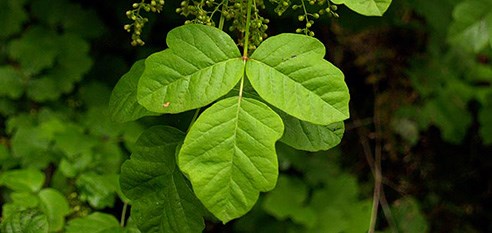Plague and HantavirusPlague and hantavirus are associated with wildlife found in these parks, but cases of human infection are rare. Rodents and their fleas can be carriers of plague, and humans can get plague if bit by an infected flea. Biting InsectsTicks are common in grassy, brushy at low-elevation areas. They can carry diseases that harm humans. Check yourself for these insects after walks; their bite is painless. Tuck your pant legs into your socks when you walk in these areas to help you to spot them before they get to your skin. Remove them carefully with tweezers and seek a doctor’s advice. Locations and numbers of insects vary by season and year to year. Be prepared. 
NPS Photo Poison OakA common shrub up to 5,000 feet elevation. Poison oak has leaves in groups of three. Leaves are red and berries whitish in fall, the plant is bare in winter, and has shiny green leaves in spring. If you touch any part of it, wash skin and clothes with soap and warm water right away. Tussock Moth CaterpillarsThe parks are experiencing an increase in Douglas-fir tussock moth caterpillars. Learn more about tussock moths and caterpillars, and why it is smart to avoid contact with them. |
Last updated: July 9, 2025
